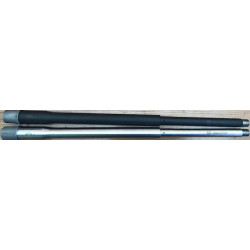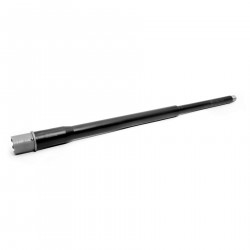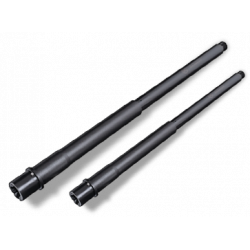What You Need To Know about AR-15 and DPMS 308 Barrels
The bolt carrier group and the barrel are often considered to be the "heart" of the AR-15 rifle. While the barrel does not involve an intricate mechanism with moving parts like the BCG, the way it is constructed has its own vital role in the functioning of your rifle. Let's look at some important factors to consider.
Barrel Material
Many AR barrels are made of 4140 or 4150 Chrome Moly steel alloy because they are relatively less expensive to produce. The last two numbers refer to the carbon content (4140 means .40% carbon, 4150 means .50% carbon, etc.). The downside to these "ordnance steels", as they are sometimes referred to, is the low chrome content which makes the barrel more prone to rust.
Sharps' Precision barrels are made out of 416R Stainless Steel which contains more chrome for added corrosion resistance and durability. Stainless steel barrels will generally also be more accurate then their Chrome Moly counterparts.
For added durability, our barrels are also either shot peened or treated with a Cerakote finish.
Barrel Profile
When considering the barrel profile, you need to keep in mind the performance demands you are going to be putting on your rifle. In short, the profile of your AR-15 /DPMS 308 barrel refers to its thickness at different points of its length.
Light profiles, also known as, light weight profile, pencil profile (pencil-shaped is the lightest profile made heat up quicker than any other profile made) make for an overall lighter weapon that is easier to carry but will heat up very quickly, shifting the point of impact and affecting accuracy. Too much heat for too long may also start to damage the steel itself.
Heavy profiles, also known as HBAR/heavy/bull/varmint will definitely add substantial weight to your rifle as compared to the pencil and lightweight versions, but they are unmatched when it comes to precision during prolonged shooting sessions.
The explanation for this is simple. The first few rounds will not make much of a difference as both barrel profiles will stay relatively cool. Heavier barrels, however, will withstand a much longer use without heating up as quickly, meaning that their accuracy will be more consistent.
That being said, modern light profiles are still made sturdy enough to satisfy the needs of the majority of shooters. At the end of the day, you need to consider whether you need to carry your weapon around a lot (choose a lighter profile) or whether maximum precision is what matters (get an HBAR).
Barrel Length
This is an obvious one but another important characteristic to consider when picking a barrel is its length. AR platform barrels range from 16'' to 24'' long (16'' is also the minimum legal barrel length if you don't want your barrel to be designated as a short barreled rifle). Federal rules apply to any rifle barrel shorter than 16 inches.
While shorter barrels are lighter, they also produce less velocity and more bullet drop. Longer barrels produce more velocity, increasing your bullet's effective range. More velocity also means less bullet drop and sight adjustment. As you probably guessed, however, longer also means heavier.
The shooter must choose the barrel profile with the type of shooting/hunting they are purchasing it for.





